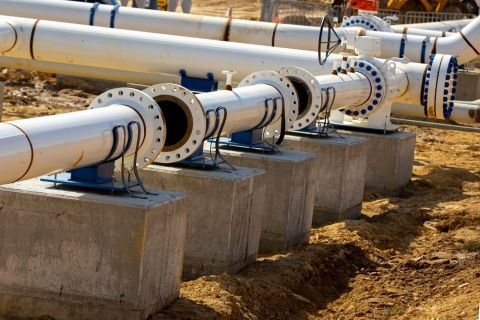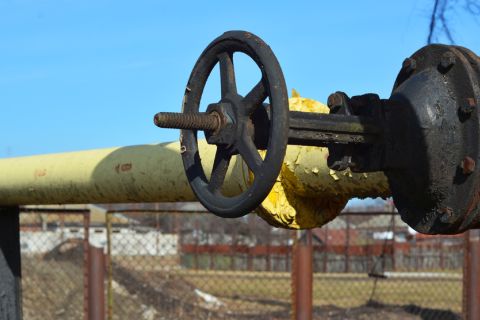The evidence that floaters remain the operator’s main offshore development solution of choice is clear, with the use of floating production systems (FPS) continuing to rise steadily as oil companies successfully find hydrocarbons in deeper and more remote waters around the world.
Capex for the global floating production market over the next five years (2012-2016) is forecast to be a massive US $91 billion, according to exclusive data given to E&P by analyst Infield Systems. Of this, nearly $23 billion will be spent in Latin America (almost entirely Brazil), while close behind is Africa with more than $17 billion to be invested (and with its eastern coast to start playing an increasingly larger role in the longer term).
Ultra-deep driving demand
It is the upstream industry’s drive into ultra-deep waters that will dominate FPS demand over the course of the next five years. According to Infield, projects in 1,500 m (4,921 ft) water depth and greater will dominate demand, with installations in these depths to make up a 31% share of floating platform capex over the 2012-2016 timeframe.
This compares to 22% over the historical 2007-2011 period. Of these ultra-deep developments, the analyst said Latin America will continue to hold the dominant share with 58% of forecast capex spend, with key FPS projects including the Lula and Sapinhoa fields in blocks BM-S-11 and BM-S-9 offshore Brazil.

Spars remain a regular choice for deepwater and ultra-deepwater developments, particularly in the US Gulf of Mexico. Shell’s Perdido spar is the deepest (in terms of water depth) floating production platform currently in operation, and it can produce up to 100,000 b/d of oil. (Image courtesy of Shell)
But while Brazil will be the dominant force, a key trend is emerging with other previously more marginal areas for floating production developments beginning to exert greater influence.
The surge in activity off the northwest coast of Australia, in particular, is helping to change the dynamics of the global market, with the proportion of total capex across all water depths attributable to Latin American developments expected to drop from 30% across the historical period to 27% going forward to 2016.
“Indeed, during the forecast period, the Australasian region is expected to witness its market share of capex increase by 10% over the prior period, 2007 to 2011 – the largest regional increase across the globe,” said Quentin Whitfield, director at Infield. This is largely a result of key installations offshore Northwest Australia, including Inpex’s Ichthys project, with an expected installation date of 2016; the Hess-operated Equus project, where expenditure is expected to start during the forthcoming five-year period; and Shell’s giant multibillion dollar Prelude floating LNG (FLNG) vessel development.
Despite the FPS market being a relatively capital-intensive option for development, with the sector having been on the front line of affected market sectors in times of oil price decline and global recession, Whitfield said rising global energy demands and the growing ambitions of emerging countries of production (in particular West Africa and Latin America) mean the future market for floating production facilities “once again looks robust.”
Since the year 2000, the trend for floating platform installations beyond 500 m (1,640 ft) water depth has been primarily driven by Latin America (almost entirely Brazil), which since that year has consistently held a 35% market share of capex at this water depth level and is expected to maintain this throughout the forecast period.
Order backlog at record high
Brazil’s dominant role at present was highlighted by another analyst, International Maritime Associates or IMA, which pointed out there are currently 28 floating production units being built for the country’s booming offshore sector – 38% of the global order backlog, which is itself at an all-time high.
With a total of 74 production floaters on order worldwide, this figure is 40% higher than the backlog from a year earlier and more than double the backlog in mid-2009. The current backlog consists of 49 FPSOs, six production semis, three tension-leg platforms, four spars, three FLNG units, and nine floating storage and regasification units.
Of those units on order, 40 are utilizing purpose-built hulls, and 34 are based on converted tanker hulls. Of the 74, according to IMA, a total of 42 are owned by field operators, and 32 are to be supplied by leasing contractors.
Continued FPS growth also is reflected in the analyst’s forecast, with 233 projects in various stages of the planning process that could potentially require a floating production or storage system. A year ago this figure was less than 200, while five years ago it was just 122 projects.
Not all these projects will materialize, of course – but a good many will because their appropriate location, water depth, field characteristics, distance from shore, field operator preference, and so on indicate them as obvious candidates, according to IMA.
Editor’s Note: Data sources for this article have been supplied separately by Infield Systems and International Maritime Associates.
Recommended Reading
For Sale? Trans Mountain Pipeline Tentatively on the Market
2024-04-22 - Politics and tariffs may delay ownership transfer of the Trans Mountain Pipeline, which the Canadian government spent CA$34 billion to build.
Equitrans Delays WV-VA Mountain Valley Natgas Pipe Again, Boosts Cost
2024-02-20 - U.S. energy firm Equitrans Midstream delayed the estimated completion of its Mountain Valley natural gas pipeline from West Virginia to Virginia to the second quarter from the first quarter due in part to adverse weather in January.
Apollo Buys Out New Fortress Energy’s 20% Stake in LNG Firm Energos
2024-02-15 - New Fortress Energy will sell its 20% stake in Energos Infrastructure, created by the company and Apollo, but maintain charters with LNG vessels.
TC Energy, Partner Sell Portland NatGas Transmission System for $1.14B
2024-03-04 - Analysts expect TC Energy to make more divestitures as the Canadian infrastructure company looks to divest roughly $2.21 billion in assets in 2024 and lower debt.
Summit Midstream Sells Utica Interests to MPLX for $625MM
2024-03-22 - Summit Midstream is selling Utica assets to MPLX, which include a natural gas and condensate pipeline network and storage.




